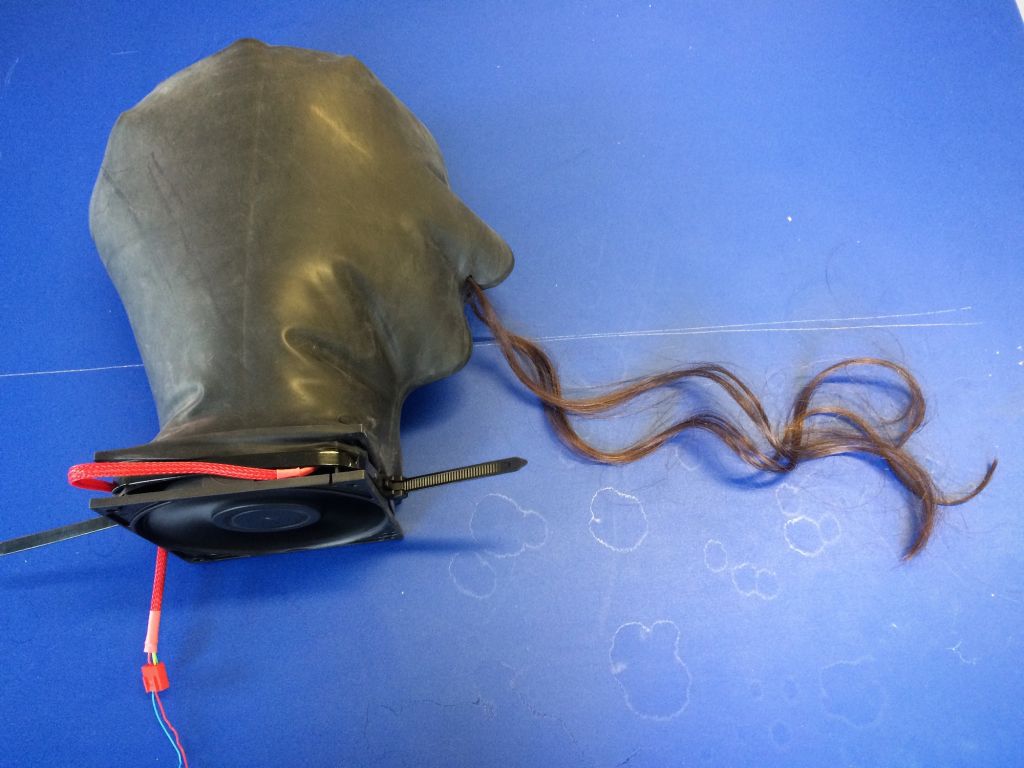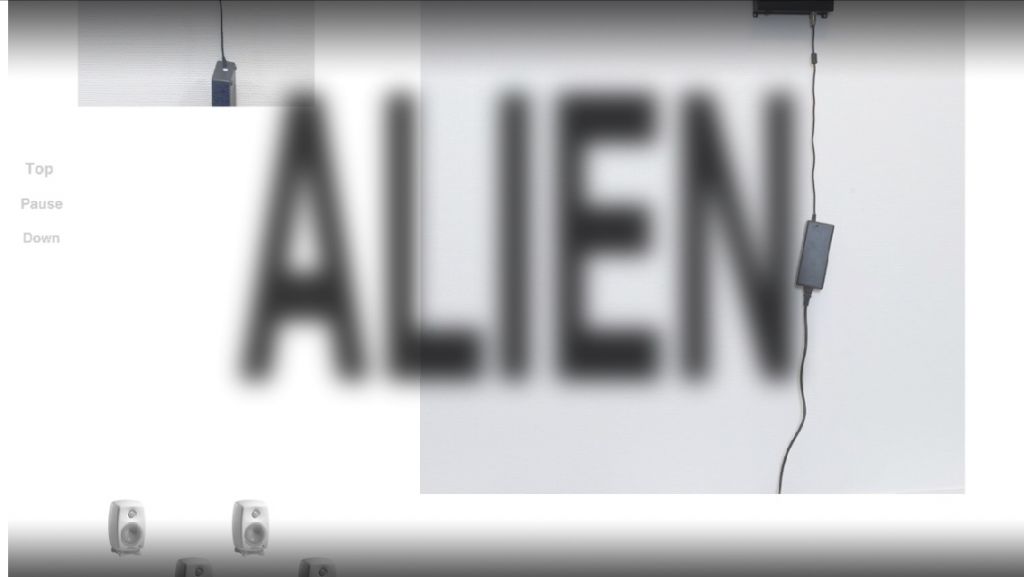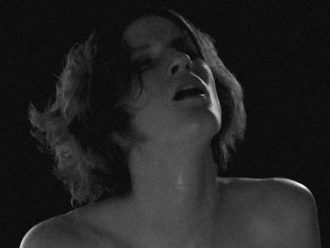
Ignas Krunglevičius. Sketch for the exhibition at Kunsthall Oslo, 2016
As it has been less than a year since Ignas Krungelavičius’ solo show, Private Syntax Virus, at gallery Vartai, he probably needs no introduction to most followers of the Baltic art scene. He has currently been busy, intensively preparing and experimenting with structural objects created for an upcoming solo exhibition with Kunsthall Oslo where he will present his upcoming project with a new creative twist. We spoke with Ignas about how inconsistent schizophrenic realities pervade his work.
Neringa Černiauskaitė: Last year, there was an exhibition called Private Syntax Virus at gallery Vartai where you tried to express an inconsistency between the “virtual” world, being created by technology, and the material, physical infrastructure that supports it. Why was it important for you to highlight this inconsistency? Could this be considered a criticism of the medium, or are you avoiding both of these terms?
Ignas Knunglevičius: In the Private Syntax Virus exhibition, I wanted to use the inconsistency that you mentioned between physical infrastructure and the virtual content that uses it as a tool to examine pre-Copernican traumas (The model of the universe proposed by Nicolaus Copernicus in the Renaissance period challenged mankind’s conceit). This critique of anthropocentrism was the set of ideas that contextualised the works in the exhibition. For example, in the Hard Body Trade video, I asked: can nature be considered an infrastructure that supports human conceit? The term “nature” itself is a normative construct, meaning there is something that is “unnatural”. Maybe nature doesn’t exist, and we have only invented it to tell beautiful stories about ourselves. This layer of analysis on pre-Copernican traumas works as an exit point for me when I create work. Although the works on display are abstractions of these ideas, I tried to significantly reduce these works so they would lose their direct utilitarian critical function and simply become “works”.
In Jussi Parikka’s article The Alchemic Digital, The Planetary Elemental, he talks about changes in late capitalism, especially in the last few years with the advent and spread of smart technologies, where the extraction of necessary metals and materials is spectacularised rather than hidden. According to Parikka, we are moving from a pan-psychotic era to a pan-metallic one. Eglė Juocevičiūtė even called a review of your exhibition “Sexy Structure”… How important is the aestheticisation of that infrastructure in your work, especially in those pieces shown at gallery Vartai?
By the way, doesn’t turning infrastructure into sculptural objects perform a role reversal, forcing us to forget the physical items that support virtual reality rather than reminding us of them?
It’s true, late capitalism uses rare and common metals as materials to manufacture smart phones which return to the earth after several years – though in this case, almost as un-recyclable toxic waste. To return to your question though, perhaps it’s because these pieces are abstractions, which I understand here as the simplification of our environmental boundaries manifested as a work of art, and not real machines, and because they have aesthetic similarities to the machines mediated by virtual reality. I generally have a hard time imagining objects without aesthetics, so the aestheticisation of infrastructure in Sexy Structure was not intentional.

Ignas Krunglevičius. Sketch for the exhibition at Kunsthall Oslo, 2016
To return from the material dimension to the virtual one, several of your pieces include moments of schizophrenia. Could you expand on this? Is this important to you as another opportunity to show inconsistencies? What would a schizophrenic algorithm look like?
Looking at history, it seems like mankind has been confusing reality with the imaginary of the unreal since the beginning of time. From the aborigines’ dreamtime to articles in newspapers being written by algorithms, we are confronted with virtual realities almost every day. Schizophrenia is used here as a metaphor. It’s not a psychiatric analysis, but more a look at the everyday position of a neoliberal “homo economicus” (consumer) subject. As social media shatters and reduces a consumer’s identity, the consumer also measures their intestinal biome’s functions and muscular metabolism in an effort to optimise their body and could, perhaps, become immortal if the “singularists” are right. Schizophrenic situations arise in the relationship between how consumers understand themselves, and what is expected or demanded of them.
Talking about bodies, albeit human ones, let’s move on to your new project. I know that you’re preparing for a big exhibition at Kunsthall Oslo, and bodies, or rather their contemporary nomadic existence, are a crucial starting point?
I plan to make the exhibition modular with sculptures of different scale, sound installations, and performances. I’ll be extracting various histories and utopias from the Silicon Valley techno-libertarians’ ideological machine, Californian ideologies of the 90s, and critical texts on modern cloud feudalism. Speculated “products”, which seem meant for the new “precariat” class will be connected to sculptural objects that can be used as communication points with augmented “neo-humans”. Yes, the exhibition is not for us, but for the people who will replace us.
Do you have the “precariat” class in mind, or do you mean technologically enhanced people? Perhaps your sculptural objects could be meant for modern mobile bodies, as well, when as early as 1969, the Austrian architect Hans Hollein designed and demonstrated a mobile inflatable apartment temporarily locating it in a square by an airport which, at the time, sort to predict a mobile future?
The “precariat” class is an economic group that does not have capital, a good education or a political voice. They are those who are left by the roadside of our meritocratic highway. Hans Hollein’s mobile inflatable apartment was interesting because it is an excellent manifestation of the aforementioned Californian ideology. It’s as if our modern technological “guru” has predicted a wonderful future. Though in reality, this would be a rather funny workplace solution in many ways (with today’s international café chains appearing to solve this problem, seemingly more effectively). Therefore, the exhibition will feature two meta-economic groups: the “precariat” and the “technologically enhanced”. Unimaginably enhanced bodies and consciousnesses will contrast with the remaining people who have not had the opportunity to enhance themselves and are classified as “biomass” living under a bridge in their inflatable homes.

Ignas Krunglevičius. Sketch for the exhibition at Kunsthall Oslo, 2016
I can’t help but mention it here as well, that the theme of this issue is digital abject. Would you say that this “biomass” (or “bare life”), in a certain sense, represents the abject of technocratic utopias? That which reminds us of the dark side of our un-enhanced biological origins – the deficiency and degradation that bring us closer to death?
This process of human biological bodily enhancement is interesting because techno-libertarians consider consciousness and the body to be two separate things. According to them, the human body is an unsuitable reservoir for an educated individual. Unfortunately, however, we cannot yet upload “ourselves” into the cloud, and bodies degrade, so all we have left is augmentation. I think that “biomass” is the abjection of a technocratic utopia, which works as an ideological agent to further encourage the investment of intangibly large resources into the enhancement of the human body.
Is this project more of a speculation about the future or a commentary on modern processes? How are these processes reflected in Norway, for example, where you have lived for quite a few years? And do we see the midpoint between “enhanced” and “precariat” bodies here?
You can feel the commentary on modern processes in the exhibition, but speculation about the future is no less important here. Even if they won’t be completely implemented, the ideas of technological utopians generate the vectors of future processes, which influence the course of politics, culture and economics. Therefore, speculation about the future has the potential to become prophetic. In this sense, I do not see a significant difference between Norway and Lithuania. Perhaps Norway has less of the “precariat” class and the middle class spends more time on bodily enhancement. But this requirement for success, which is constantly broadcast to us worldwide through the media, is global.

Ignas Krunglevičius. Sketch for the exhibition at Kunsthall Oslo, 2016
Finally, how do you collect materials for your works? Could we say that those materials are metonymies, where a part replaces the whole, or rather, where the materials “represent” a certain industry, process or even ideology?
These days, I’ve become interested in latex costumes taken from the “extreme” sex industry. In the discourse surrounding BDSM (Bondage and Discipline, Sadism and Masochism), latex is used as a material to strengthen tactility (from the perspective of the techno-utopian discourse, this would be “skin augmentation”). When a viewer sees a “gimp” costume, they might experience what’s called “autoidentification”. This is like in music, when low frequencies resonate with its listeners’ bodies. I’m looking for similar combinations of sounds and objects for my project which can generate that dissonance between consciousness and the body. Of course, the aspect of meta-representation does figure into the initial material-gathering stage. But later, after further experimenting in the studio, these dissonances should become works that represent themselves.
























